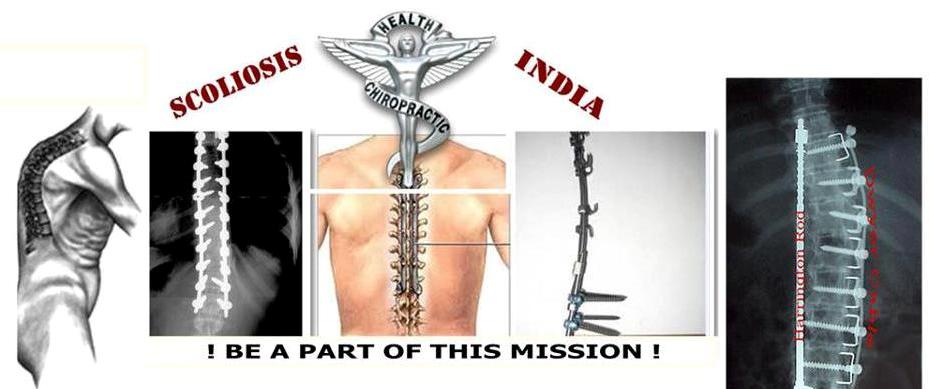Experts said that if a schoolbag weighs more than 20% of your child's
body weight, it is very likely to severely harm his or her spine,
causing scoliosis that will lead to a lifelong torment.

Experts said that if a schoolbag weighs more than 20% of your child's
body weight, it is very likely to severely harm his or her spine,
causing scoliosis that will lead to a lifelong torment
______________________________________________________
Spine specialist Dr Su Lin Ming, with 10 years of experience in the
field, said that although there is no medical report proving that heavy
schoolbags will cause spinal injuries, based on some cases he personally
saw, if the schoolbag weighs 20% or more of a child's weight, it could
increase the risk of scoliosis.
According to a survey with rampant sampling, reporters found that the
schoolbags of students aged between eight to twelve years old averagely
weigh 30% of their body weight.
Dr Su reminded that the number of young patients suffering from
intervertebral disk rupture and displacement has increased as the
majority of patients were over 30 years old in the past but today, there
are increasing number of patients below 30.
He pointed out that intervertebral disk rupture could lead to intervertebral disk displacement and sciatica nerve pain.
Humans start to feel unwell and back muscle pain when bearing
something weighs 10% more than their body weight, but it would not cause
harm. Therefore, he suggested that schoolbags should not weigh more
than 20% of body weight.
According to the survey, there are two major factors causing heavy
schoolbags, namely students do not clean out their bags and there are
too many books to bring. In any case, the schoolbags of students who
clean out their bags daily still weigh about 28% of their body weight
while the schoolbags of students who do not clean out their bags weigh
30 to 45% of their body weight.
Therefore, according to Dr Su's suggestion, almost all schoolbags have exceeded the weight that students can bear.
"As a doctor, I think schoolbags weighting more than 20% of student's
body weight is unhealthy but warning cannot not be issued as there is
no authoritative medical reports to prove that heavy schoolbags are
harmful. The phenomenon is worrying and I suggest that schools should be
wary of it and do something to it," he said.
Dr Su, who is also a father, suggested that parents should ensure
that their children clean out their schoolbags and bring only necessary
items to school everyday. They can also take photos of their children's
body from time to time for recording purposes, so that they can observe
the children's physical development, particularly shoulder equilibrium
as scoliosis problems could be seen from imbalance shoulders. Once the
problem is found, they must seek for medical treatment and rectify it
through physical therapy to avoid greater harm.
He also suggested that parents could also prepare another bag for
their child to reduce the weight of schoolbag and relieve pressure on
the spine.
Kesatuan Kebangsaan Guru-Guru Besar Malaysia (KKGGBM)
secretary-general said that heavy schoolbags are indeed a problem and
discussions have been held over the years to seek for solutions.
He said that some schools provide lockers for students to keep their books and he encouraged other schools to follow suit.
He thinks that parents should ensure that their children clean out
their schoolbags everyday to avoid them from bringing unnecessary items
to school, such as magazines and comic books.
He stressed that teachers should not swap lessons without prior
notice as it would cause students to bring all books to school everyday
instead of bringing books according to the timetable.
He also said that E-book is now a trend and it should be able to solve the heavy schoolbag problem.
Daycare operator Mai Wei Jian said that he has been very concerned
about heavy schoolbag problem but so far, the problem has not yet been
solved.
He said that his daycare centre is located near a Chinese primary
school and about 60 students will study and rest in the centre after
school everyday.
Mai said that he helps sending their schoolbags to the centre with a van.
"Although they said that their schoolbags are not heavy, I found many
students have bad postures due to their heavy schoolbags," he said.
He also pointed out that although many primary school students are
now using rod schoolbags, if the speed is too fast or the weight is too
heavy, the momentum could cause children to fall down the stairs when
they pull the back down the stairs.
Daycare teacher Wang Miao Li said that she is particularly concerned
of the heavy schoolbag problem as she is a scoliosis patient.
She said that until now, her mother will still look at her and say:
"If I were to know that it would harm your spine, I would personally
send you to school no matter how busy I was." She cried whenever she
heard her mother said so.
"I'm now a teacher and I feel worry when I see students carrying
heavy bags. I will try to help them carry the bags as I do not want them
to suffer the lifelong torment due to negligence," she added.
Experts said that if a schoolbag weighs more than 20% of your child's
body weight, it is very likely to severely harm his or her spine,
causing scoliosis that will lead to a lifelong torment.
Source : My Sinchew.Com , 5th Feb 2014
